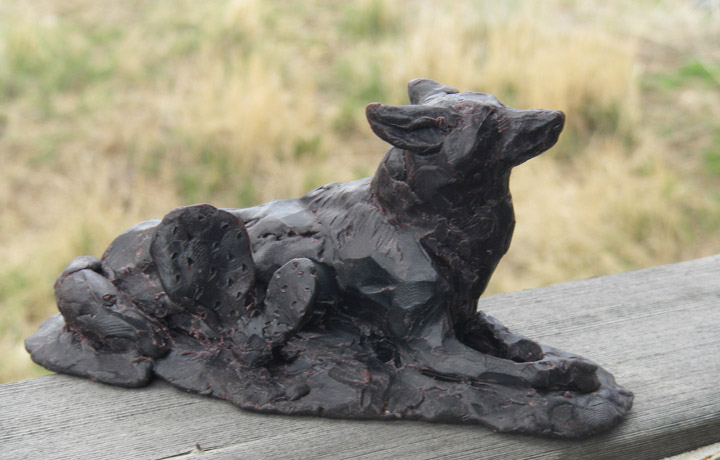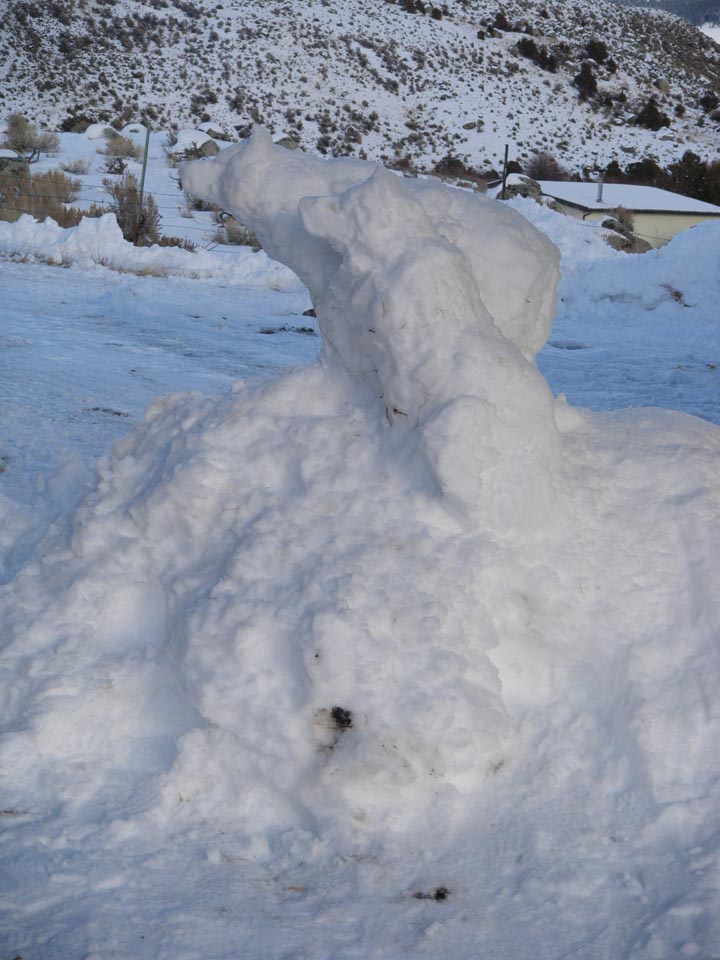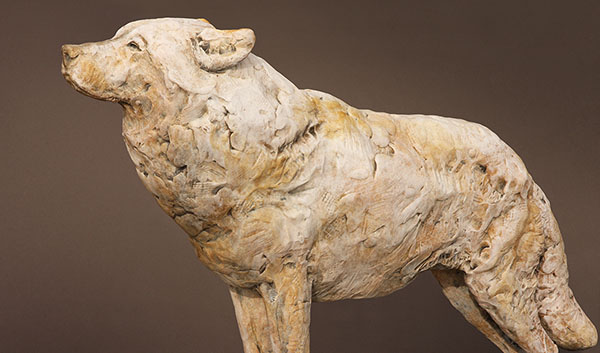 This time of year in Yellowstone, the margin between life and death is thin. Rarely are the relationships between animals and the landscape more evident than in late winter, when the contrast between hunter and hunted, between survival and… not, is stark. We have much to witness, and a great deal to learn.
This time of year in Yellowstone, the margin between life and death is thin. Rarely are the relationships between animals and the landscape more evident than in late winter, when the contrast between hunter and hunted, between survival and… not, is stark. We have much to witness, and a great deal to learn.

Field sketches & measurements of a bull elk carcass (2 days post-mortem).

Field sketch of bison carcass 10 days after death (from February 11, 2007)
Observe a carcass scene and you begin to realize the complex interactions at play. The hierarchy at a carcass is well understood by those in attendance, played out between dominant and submissive, aged and youthful, resident and itinerant. Among coyotes, the ‘boss’ displays a fierce open-mouthed “alligator- gape” posture to all competitors. Yet, it is the coyote that sits on the periphery until the wolves are finished eating. Ravens show their high rank by strutting with head feathers raised and fluffy flanks. Nothing is random; the actions of wild creatures – and humans – have both causes and consequences.
The first grizzly bear of the year comes in for his share – and everyone steps aside… One gesture by a singe animal can change the entire dynamic of the carcass scene; similarly, the actions of we humans have a ripple effect on the environment. My job as an artist is to divine truths about the natural world as a way to find our place within it. Hence, I become a student of nuances in animal behavior in order to convey an emotional landscape, and connect the human world to the animal world.
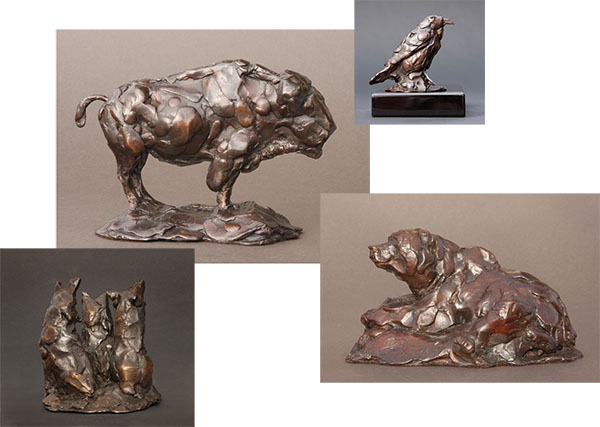
Clockwise from top-left: “The Matriarch” – cow bison, “Active Mind” – common raven, “Seat of Power” – bedded grizzly bear and “Lamar Valley Jazz” – coyote trio (the latter edition is sold out)
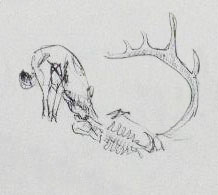
Wolf pup feeding on bull elk carcass
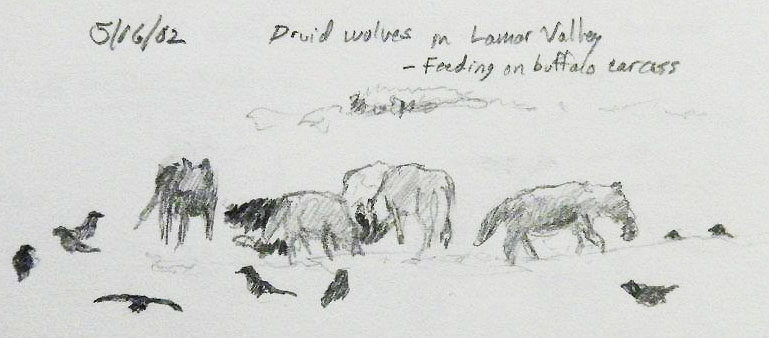
Sketch from life of the Druid Wolf Pack in Lamar Valley feeding on a bison carcass on 5/16/02.
“The White Lady,” (pictured at top) to me is not simply a wolf, or a bronze, but a visual expression of something universal, the weight of her responsibilities as an alpha perhaps, an animal to whom a carcass represents the margin between life and death for her pack. “The Matriarch” (shown in upper left of sculpture montage) represents the passing of wisdom between generations; a lifetime of knowledge that guides the survival of the herd on their quest to avoid becoming carcasses themselves.
For the reader: It is seldom that one can observe a carcass at close range here in Yellowstone Park. Kills often happen away from the roads, and unlike other places such as in Africa, the presence of the observer would disrupt the entire dynamic of the animal interactions. As a result, distance viewing through a spotting scope is a must and only after the predators and scavengers have had their fill, i.e. consumed every bit of digestible, and even some non-digestible, matter can the artist or curious Park visitor safely and ethically go in and see what is left. FYI, an adult elk killed by wolves will largely be consumed in one day, and almost entirely by the second day, bison, being much larger, can last a week or more.
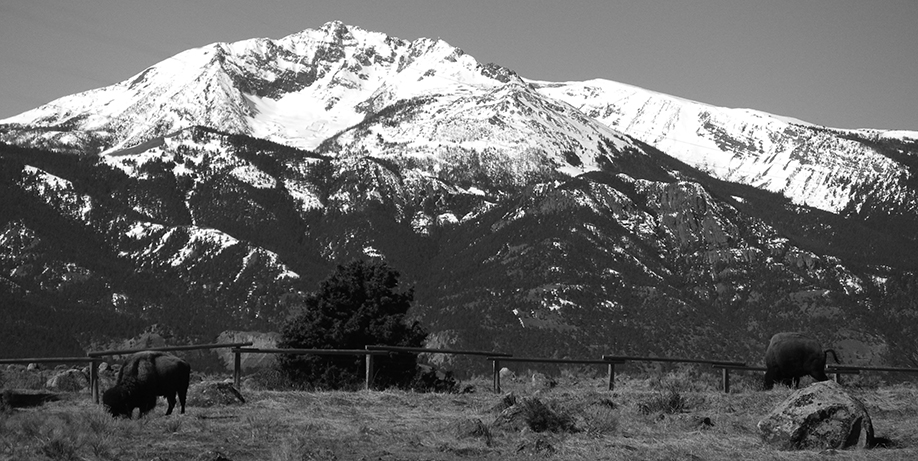 Despite having spent hundreds of hours watching bison, I never tire of observing them. Where others may see a docile, lumbering animal in a slow-moving herd, I see a deep landscape of gesture nuance of form and individual character. As I begin work on a new bison piece, I find myself yet again, with sketchbook and pen in hand.
Despite having spent hundreds of hours watching bison, I never tire of observing them. Where others may see a docile, lumbering animal in a slow-moving herd, I see a deep landscape of gesture nuance of form and individual character. As I begin work on a new bison piece, I find myself yet again, with sketchbook and pen in hand.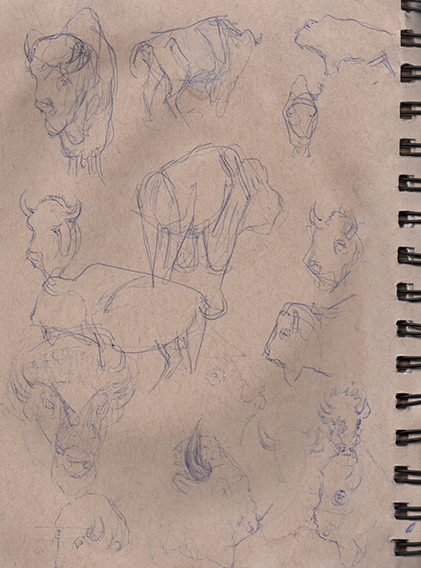
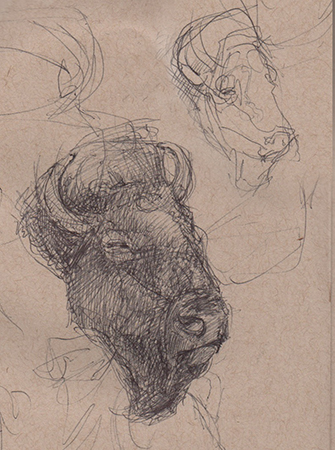
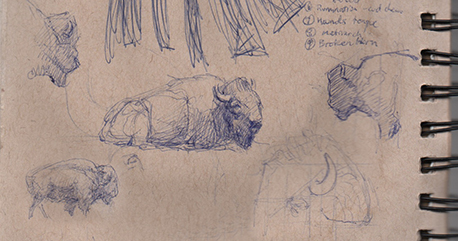
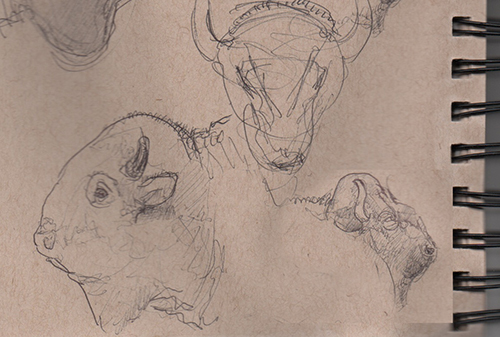

 This time of year in Yellowstone, the margin between life and death is thin. Rarely are the relationships between animals and the landscape more evident than in late winter, when the contrast between hunter and hunted, between survival and… not, is stark. We have much to witness, and a great deal to learn.
This time of year in Yellowstone, the margin between life and death is thin. Rarely are the relationships between animals and the landscape more evident than in late winter, when the contrast between hunter and hunted, between survival and… not, is stark. We have much to witness, and a great deal to learn.




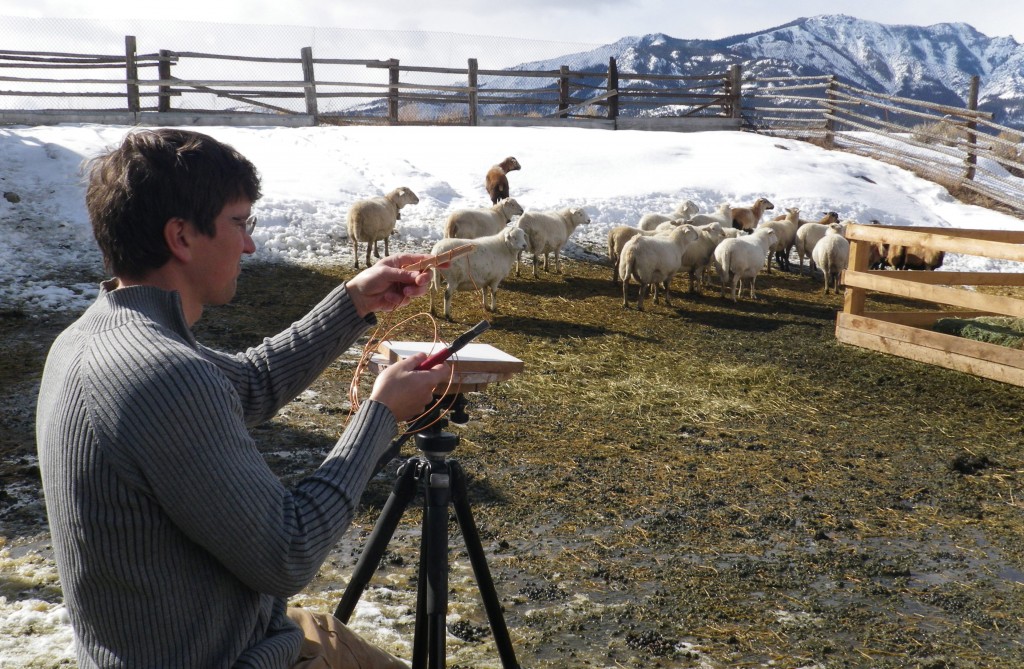 Wire and wood form the spine and legs of the armature with some newspaper added in to take up the extra space.
Wire and wood form the spine and legs of the armature with some newspaper added in to take up the extra space.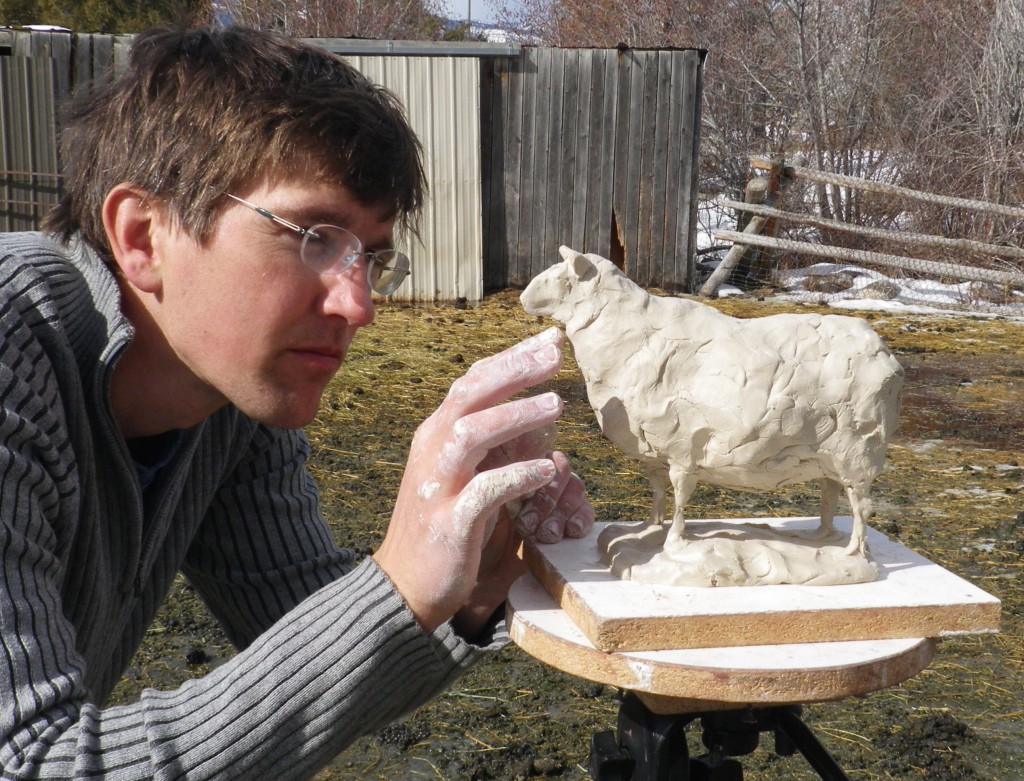
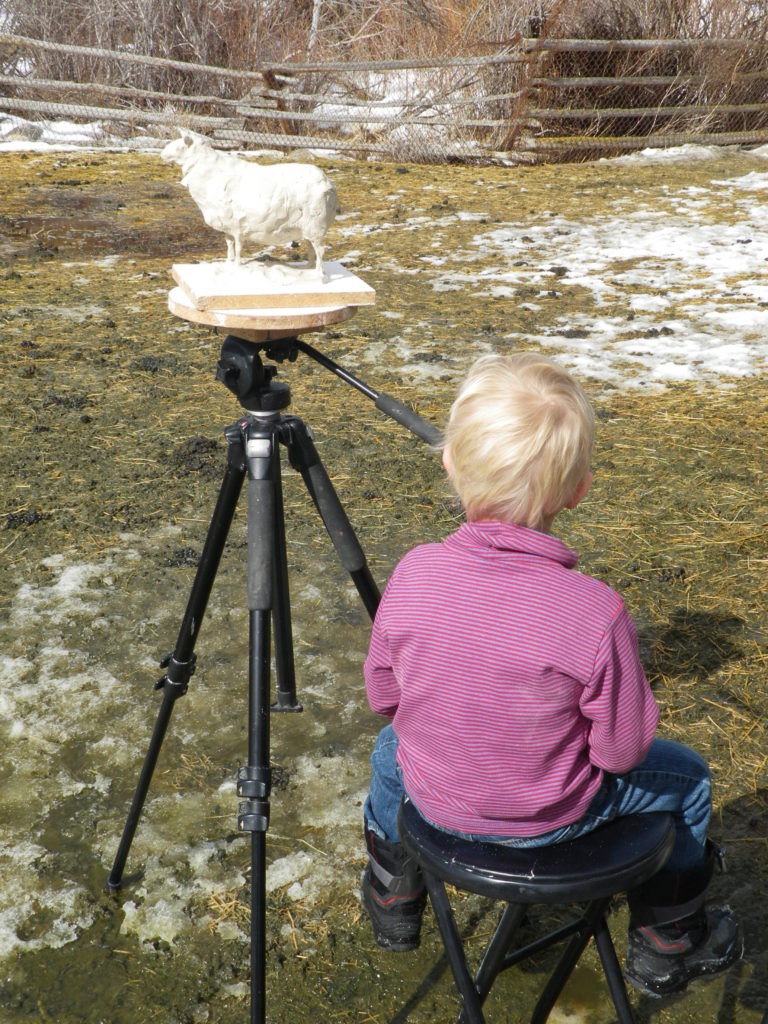
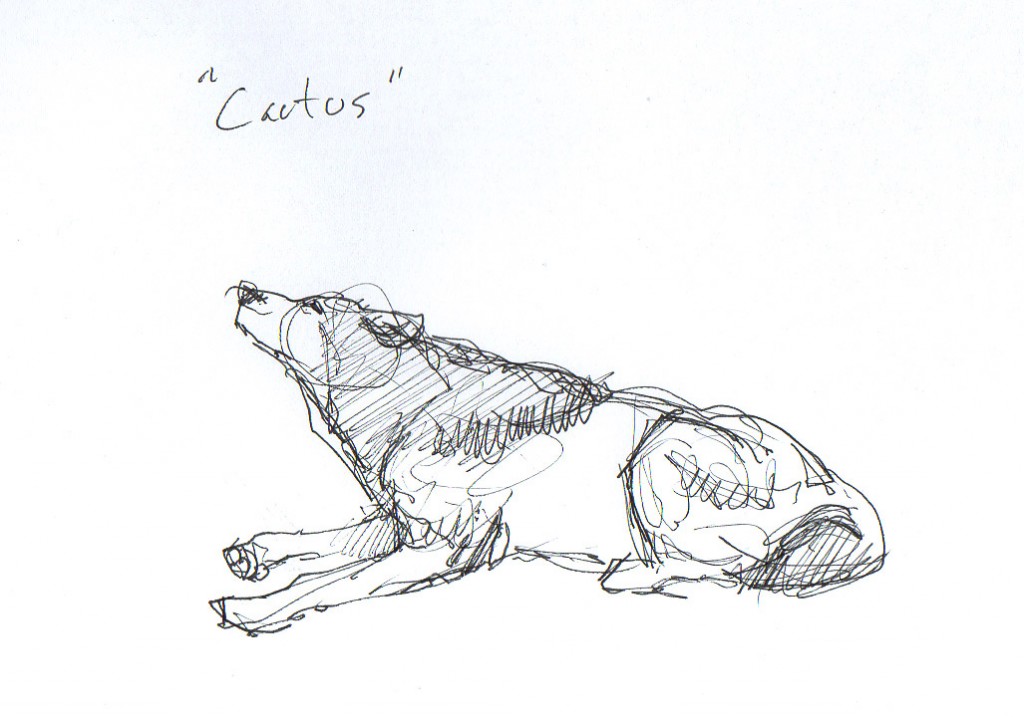 in my mind immediately jumped to some of the research on Yellowstone wolves showing how the body gestures of wolves convey the seriousness of their hunting efforts to their prey. When wolves have zeroed in on a particular animal, their gait increases, their head is lowered and tail straightened out to the back, rather than up as their heads and tails are when searching out a prospective meal. With this in mind, I looked back at our female Labrador, Casey, who had a ‘hunting’ body posture as she was darting amongst the prickly pear cactus. I wondered if this was signaling to those deer what the wolves do during a chase? From there, my mind jumped to the fact that wolves and coyotes must get spines in their feet during some of these chases. This gave me the overwhelming feeling of empathy for them in that powerlessness state of not being able to tend to their own injuries, or not having people to care for them as our dogs do. We all know this feeling to a degree when we become injured or encounter things, people, situations in life that we cannot change.
in my mind immediately jumped to some of the research on Yellowstone wolves showing how the body gestures of wolves convey the seriousness of their hunting efforts to their prey. When wolves have zeroed in on a particular animal, their gait increases, their head is lowered and tail straightened out to the back, rather than up as their heads and tails are when searching out a prospective meal. With this in mind, I looked back at our female Labrador, Casey, who had a ‘hunting’ body posture as she was darting amongst the prickly pear cactus. I wondered if this was signaling to those deer what the wolves do during a chase? From there, my mind jumped to the fact that wolves and coyotes must get spines in their feet during some of these chases. This gave me the overwhelming feeling of empathy for them in that powerlessness state of not being able to tend to their own injuries, or not having people to care for them as our dogs do. We all know this feeling to a degree when we become injured or encounter things, people, situations in life that we cannot change. 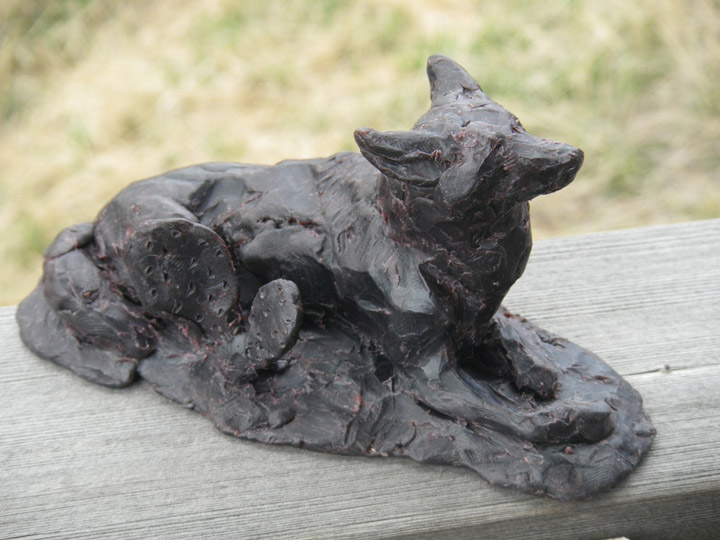 To fight them does no good, to complain often does even less – SO, I began thinking of a piece that spoke to that notion. Once I got home I made a quick sketch on paper (above) out of my head of the position our male Labrador takes when worrying his feet from cactus spines. I wanted to use those gestures as exemplified by a coyote as the subject to convey this idea. I later made this small wax study to test the idea in 3D (to the right & below). I soon felt that it needed something ‘more’ and the cactus (scaled to south Texas size as our cactus are quite small in Montana) seemed to balance the design nicely – as well as to lend context to the animal’s slightly unusual position.
To fight them does no good, to complain often does even less – SO, I began thinking of a piece that spoke to that notion. Once I got home I made a quick sketch on paper (above) out of my head of the position our male Labrador takes when worrying his feet from cactus spines. I wanted to use those gestures as exemplified by a coyote as the subject to convey this idea. I later made this small wax study to test the idea in 3D (to the right & below). I soon felt that it needed something ‘more’ and the cactus (scaled to south Texas size as our cactus are quite small in Montana) seemed to balance the design nicely – as well as to lend context to the animal’s slightly unusual position.